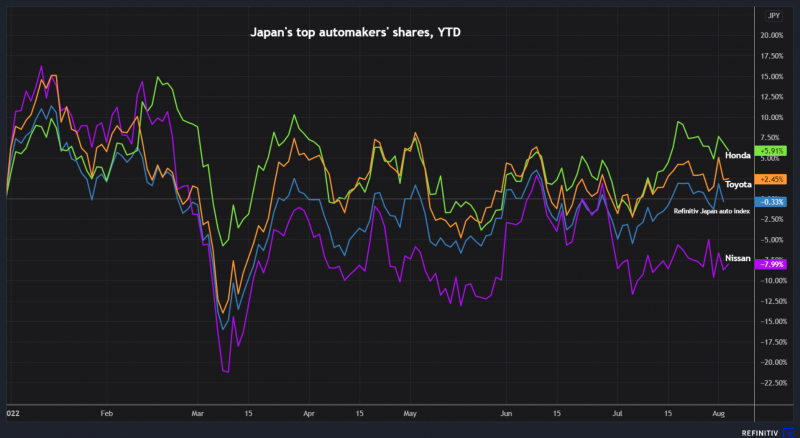Toyota Motor Corp is expected to announce a double-digit drop in first-quarter profit this week after Covid lockdowns and chip shortages hammered production.
The Japanese carmaker cut its monthly production targets three times during the April-June first quarter, falling 10% behind its initial goals, due to shortages of semiconductors and the impact of Covid lockdowns in China.
Like other manufacturers, Toyota is grappling with higher costs and fears that global inflation could put the brakes on consumer demand. Its production woes are notable because they mark a departure from its initial success in navigating supply problems at the start of the pandemic.
Last year’s first-quarter profit surged as Japan’s biggest automaker left the worst of the pandemic’s woes behind. This year, the only positive in the first quarter is likely to be the weaker yen, Koji Endo, an analyst at SBI Securities, said.
“Last year’s first quarter was a period of thorough cost cutting,” Endo said. “Compared to that, profits are likely to have fallen sharply this time around.”
Toyota is expected to report on Thursday a 15% decrease in operating profit to 845.8 billion yen ($6.47 billion) for the April-June quarter, according to the average estimate in a poll of 10 analysts by Refinitiv. The profit drop, nevertheless, is the smallest for the automaker in three quarters.

The yen weakened some 10% during the April-June quarter, almost touching 137 to the dollar at one point, compared to Toyota’s forecast for the year of 115 yen.
A weak yen is typically a boon for companies that export, as it boosts revenue when overseas earnings are brought home. However, some of the benefit has been offset in recent years as Japanese companies manufacture more abroad, meaning that their overseas costs also go up as the yen weakens.
Longer-Term Challenges
Toyota and its major Japanese rivals, Nissan Motor and Honda Motor, are also grappling with longer term challenges including electrification and automation of vehicles.
And consumer trust issues rear their head frequently in Japan, with major Toyota affiliate Hino Motors admitting on Tuesday it falsified emissions data for longer than previously disclosed.
A key near-term question for analysts and investors is whether Toyota can maintain the 9.7 million global vehicle production target for the current financial year ending in March.
Meeting that would likely depend on the outlook for the chips shortage and supply chains – as well as the economic outlook, said Endo of SBI Securities.
But even if the economy slows down, Toyota has an enormous backlog of orders, and a decrease in demand for consumer electronics could divert chips to automobile production, he said.
If Toyota does not change the full-year production target in the second quarter, that means it is very confident about production in the second half of the year to hit the goal, he said.
- Reuters with additional editing by Jim Pollard
ALSO SEE:
Toyota Scandal: Hino Falsified Emissions Data Since 2003
Toyota to Build Fleet of Small Electric Commercial Vehicles
Toyota Defends Electric Vehicle Strategy Ahead of AGM
























